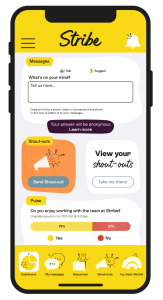7 employee engagement metrics to track that prove impact
Go deeper than surface-level satisfaction scores. Employee engagement metrics to track if you want your engagement efforts to get results.
Read MoreEmployee survey fatigue is one of the biggest concerns for any organisation that is currently running employee surveys, or thinking about starting them.
Survey fatigue happens when employees (for a variety of reasons) become less likely to answer surveys which then impacts the response rate of your survey.
Read on for our tips to help you avoid employee survey fatigue and increase response rates.
Employee survey fatigue is when employees become tired, bored, unmotivated, or uninterested in answering the employee surveys you send them. This can result in them not answering your surveys at all, or even answering them to a substandard level e.g. clicking on the same answer for every question just to get through the survey.

Employee survey fatigue is usually a combination of factors, rather than one big thing. That is why it can often feel difficult to overcome. The main factors that contribute to employee survey fatigue are:

There are many tricks and tools available to you if you’re running a survey and want to avoid survey fatigue and improve your employee survey response rates. Many of them are simple to add into your day-to-day too.
At Stribe, building and creating surveys is our bread and butter. Interested in hearing how we can help you avoid survey fatigue and maintain engagement?
About the author

Lucy Harvey, COO at Stribe, has 11+ years’ experience in purpose-driven leadership roles across health, wellbeing, internal communications, employee engagement, and marketing. She is passionate about creating workplaces where people are happy, fulfilled, and feel comfortable and safe to talk.
Go deeper than surface-level satisfaction scores. Employee engagement metrics to track if you want your engagement efforts to get results.
Read MoreSoftware gives you the tools to run surveys yourself. A consultancy does it for you. Both can be helpful, but which one works best depends on your goals!
Read MoreHow to run your first employee survey. Tips from Stribe COO Lucy Harvey, who has helped hundreds of UK organisations launch their first ever survey.
Read More